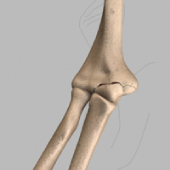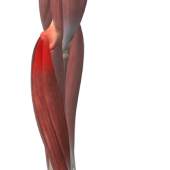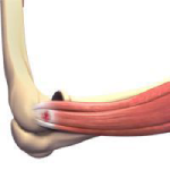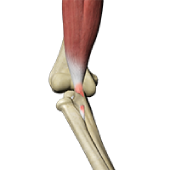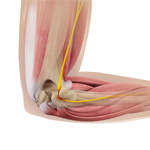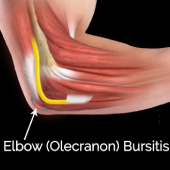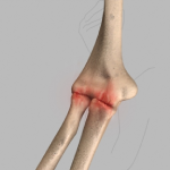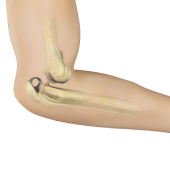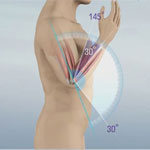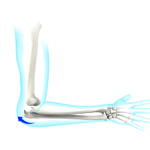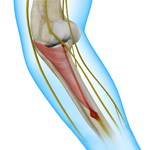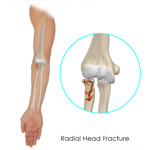- Anatomy
- Conditions
- Procedures
Elbow Fractures
Elbow fractures may occur from trauma, resulting from various reasons: a fall on an outstretched arm, a direct blow to the elbow or an abnormal twist to the joint beyond its functional limit.
Golfer's Elbow
Golfer’s elbow, also called medial epicondylitis, is a painful condition occurring from repeated muscle contractions in the forearm that leads to inflammation and microtears in the tendons that attach to the medial epicondyle.
Tennis Elbow
Tennis elbow is a common name for the elbow condition lateral epicondylitis. It is an overuse injury that causes inflammation and microtears of the tendons that attach to the lateral epicondyle.
Bicep Tendon Tear at the Elbow
A biceps tear can be complete or partial. Partial biceps tendon tears mean there is still some attachment of the tendon to the bone, while complete tendon tears mean the tendon has become completely detached from the bone.
Cubital Tunnel Syndrome (Ulnar Nerve Entrapment)
When the elbow is bent, the ulnar nerve can stretch and catch on the bony bump. When the ulnar nerve is compressed or entrapped, the nerve can become inflamed and even stop working properly, leading to cubital tunnel syndrome.
Elbow (Olecranon) Bursitis
Inflammation of the olecranon bursa leads to a condition called olecranon bursitis. This is where the bursa becomes thickened and inflamed and occasionally becomes filled with fluid.
Elbow Arthritis
Although the elbows are not weight-bearing joints, they are considered to be most important for the functioning of the upper limbs. Hence, even minor trauma or disease affecting the elbow may cause pain and limit the function of the upper limbs. Arthritis is one of the common disease conditions affecting the elbow joint.
Elbow Dislocation
The arm in the human body is made up of three bones that join to form a hinge joint called the elbow. The upper arm bone or humerus connects from the shoulder to the elbow to form the top of the hinge joint. The lower arm or forearm consists of two bones, the radius, and the ulna. These bones connect the wrist to the elbow forming the bottom portion of the hinge joint.
Elbow Contracture
Elbow contracture refers to a stiff elbow with a limited range of motion. It is a common complication following elbow surgery, fractures, dislocations, and burns. The normal range of motion for an elbow is 0 -145 degrees. A stiff or contracted elbow may be diagnosed when the ability to extend or flex the arm is lessened by 30 degrees or more. Flexion contractures greater than 45 degrees will significantly affect your ability to perform activities of daily living such as bathing and eating.
Elbow Instability
Elbow instability is a condition in which the elbow joint occasionally slides out of alignment or feels like it is going to slide out of alignment due to an unstable state of the joint.
Elbow Stiffness
Elbow stiffness is a condition characterized by a restricted range of motion of the elbow causing difficulty bending, straightening, or rotating your arm. Elbow stiffness may be caused due to injury, disease, or deformity.
Radial Tunnel Syndrome
Radial tunnel syndrome is a painful condition caused by pressure on the radial nerve of the forearm. The entrapment or compression occurs in the proximal forearm in the radial tunnel; a narrow space formed by muscles, bone, and tendon near the elbow joint. The radial nerve is one of the three major nerves of the arm that supplies the wrist and hand extensor muscles helping in movement of the hand and wrist.
Radial Head Fractures of the Elbow
Radial head fractures are very common and occur in almost 20% of acute elbow injuries. Elbow dislocations are generally associated with radial head fractures. Radial head fractures are more common in women than in men and occur more frequently in the age group of 30 to 40 years.


